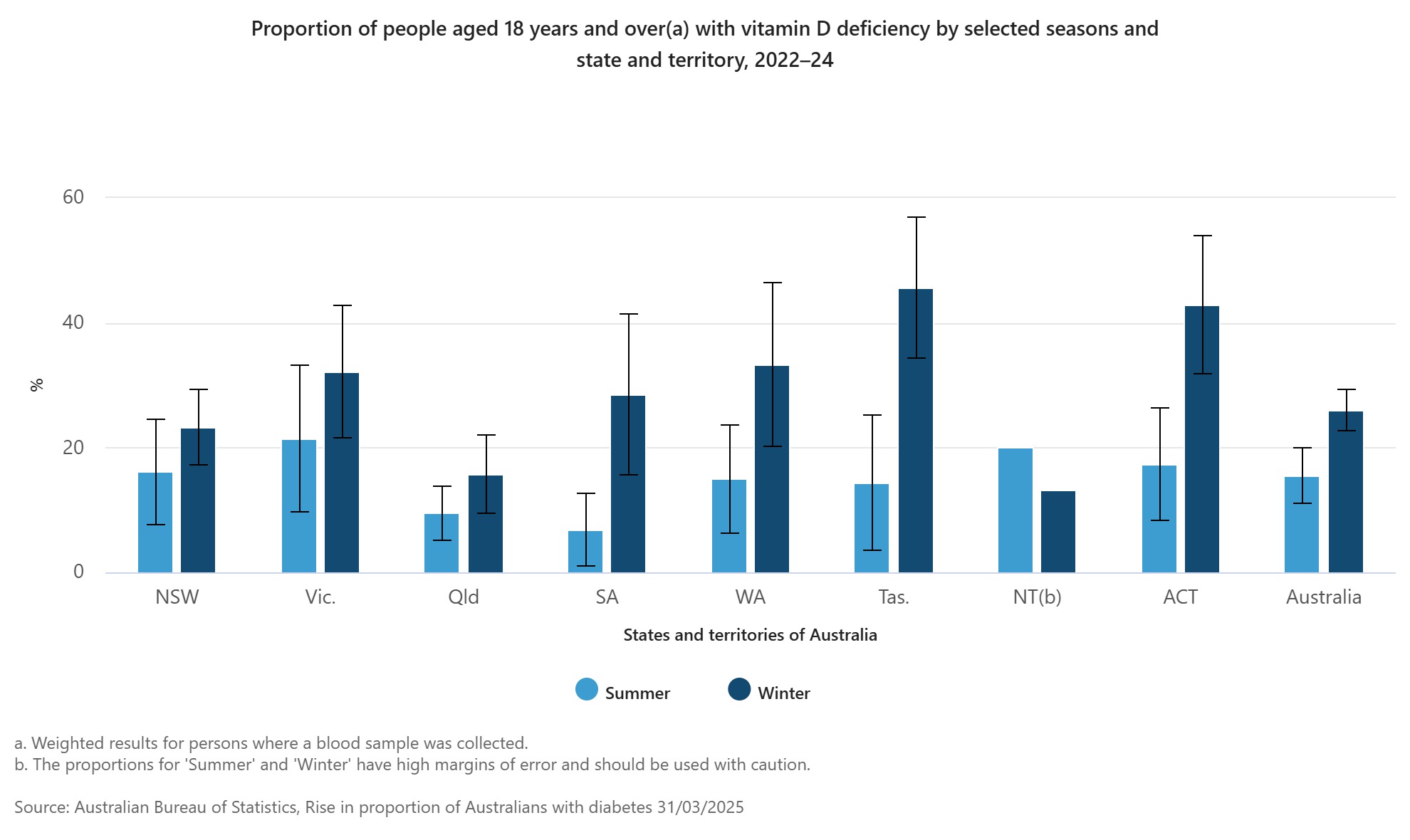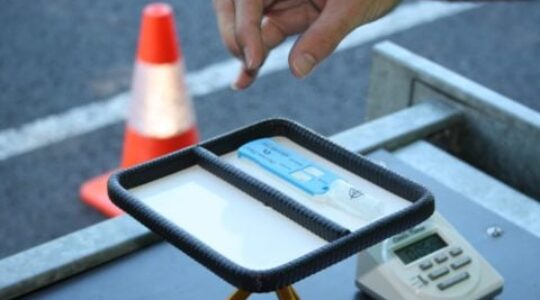Despite its famous outdoor lifestyle, more than 20 percent of Australians have a vitamin D deficiency.
Health data released today by the Australian Bureau of Statistics (ABS) showed that this figure went as high as 26 percent in winter.
The ABS said the data was concerning because the deficiency could lead to brittle and fragile bones.
“Results showed 26.1 percent of Australian adults are vitamin D deficient in winter, compared to 15.5 percent in summer,” James Mowle, ABS head of health statistics, said.
“We know that vitamin D is essential for the body to absorb calcium effectively, which is important for bone health and muscle function.”
Queensland had one of the lowest proportions of summer vitamin D deficiency at 9.5 percent, second only to South Australia with 6.8 percent.
In winter Queensland rose to 15.8 percent, but this was still the best result of all the states.
Victoria’s notoriously fickle climate and bleak days matched 32.2 percent of the population having a deficiency in winter and 21.4 percent in summer.
Tasmania had a whopping 45.7 percent vitamin D deficiency rate in winter and Western Australia was at 33.3 percent in the same season.
The figures also showed that one in 15 adults (6.6 percent) have diabetes, up from one in 20 (5.1 percent) a decade earlier.
“Males are more likely to have diabetes than females,” Mr Mowle said. “And adults living in the most disadvantaged areas are more likely to have diabetes than those in the least disadvantaged areas.
“Older people are more likely to have diabetes than younger people. Another 2.7 percent of adults are at high risk of diabetes.”
More than 30 percent of adult Australians were found to have high total cholesterol, down from 33.2 percent in 2011–12. Women (32.1 percent) are more likely than men (28.2 percent) to have high cholesterol.
More details are on the ABS website.









